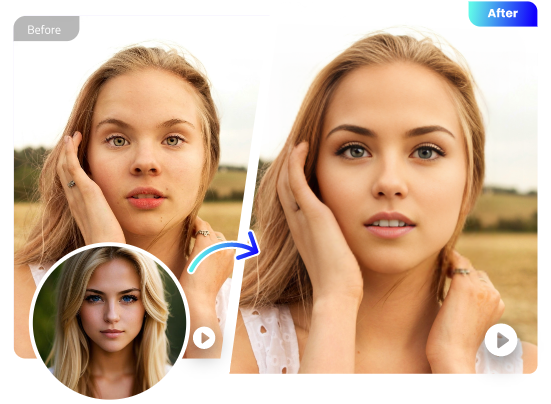In today’s rapidly evolving digital environment, new technologies are emerging that have the power to redefine how we interact with media and each other. One of the most transformative trends has been face-swapping technology. From viral social media filters to professional entertainment apps, face-swapping has changed the way we think about digital identity, content creation, and even storytelling. This article explores the origins, impact, and future of face swap technology, highlighting both its innovative potential and the ethical concerns it raises.
Origins of Face Swap technology
At its core, face switching refers to the process of digitally overlaying one person’s face onto another. Although its modern applications seem advanced, the basis of this technology goes back to earlier forms of image manipulation. Techniques such as Photoshop revolutionized digital editing in the late 1980s and early 1990s, allowing users to edit images by cutting, pasting, and blending visual elements. However, these early manipulations were often time-consuming and required considerable expertise.
With the advent of machine learning and artificial intelligence (AI), face swap technology has taken a leap forward. AI-powered algorithms can now map facial features, skin tones, and expressions in real-time, making the process faster, smoother, and much more accessible. The introduction of platforms like Snapchat and Instagram, which offered users real-time face-swapping filters, brought the technology into the mainstream and turned it into a fun and viral phenomenon. Social media users could swap faces with friends, celebrities, or even fictional characters with a few taps on their screens.
Entertainment and media applications
As face swap technology gained popularity, it began to expand beyond simple social media filters. The entertainment industry, which is constantly looking for new ways to engage audiences, has been quick to adopt this technology. Movie studios and production companies now use face-swapping techniques to bring characters to life in ways that were previously unimaginable. One of the most notable applications is the creation of deepfakes – a type of face swapping that uses AI to overlay an actor’s face onto a body double. This method was famously used in films like Star Wars: Rogue One, where the late actor Peter Cushing was digitally resurrected for the role of Grand Moff Tarkin.
Face-swapping has also revolutionized the way actors approach roles. Digital doubles and virtual performances allow actors to appear in scenes they’ve never physically shot, or even play opposite each other. This expanded the creative possibilities in filmmaking, enabled more dynamic storytelling, and at the same time reduced the physical demands on the performers.
In addition to film and television, the gaming industry has also taken up face-swapping. The games now include AI-based customization features where players can create avatars that reflect their real appearance or swap their faces for existing characters. This level of personalization adds a deeper layer of immersion to the gaming experience.
The role of face swapping in social media and viral culture
On social networks, face swap technology has become a tool for creativity and humor. Platforms like TikTok have elevated face-swapping to an art form, with users creating hilarious and often surreal face-swapping videos with celebrities, pets or even historical figures. Ease of use has democratized content creation, allowing anyone with a smartphone to create entertaining videos.
In fact, the virality of the face swap has even influenced how people consume media. Users now expect interactive features and customization when working with digital content, and brands have taken notice. Marketing campaigns often include face-swapping elements to increase engagement and capitalize on the novelty factor. For example, movie promotions sometimes allow fans to swap faces with their favorite characters to make them feel like they are part of the action.
Ethical implications and concerns
Face Swap technology has generated excitement, but it has also raised ethical questions, particularly around privacy and consent. For example, the creation of deepfakes has caused considerable concern. Deepfake videos, which convincingly swap faces in a video, can be used for malicious purposes, such as creating fake news, spreading misinformation, or producing non-consensual content. There have been cases where celebrities and even political figures have been the target of deep fakes that can undermine public trust in the media and cause confusion.
In addition, face swap technology raises questions about identity theft and personal security. With AI tools capable of replicating someone’s face, there are concerns that the technology could be misused for criminal purposes such as fraud or extortion. Governments and technology companies are working to address these issues, and some are developing AI-driven detection tools to identify counterfeits and ensure the integrity of digital content.
Privacy advocates also point out that while face-swapping apps may seem innocuous, they often require users to grant access to facial data. This data may be stored and potentially misused by third-party companies. As a result, there is increasing pressure to regulate the use and retention of biometric information more strictly to protect user privacy.
The future of Face Swap technology
Despite the ethical challenges, face swap technology shows no signs of slowing down. Researchers continue to develop more sophisticated algorithms that make face-switching more accurate, realistic, and versatile. In the future, we may see face-swapping technology play a role in virtual reality (VR) and augmented reality (AR), allowing users to fully immerse themselves in digital worlds where they can assume any identity they choose.
Additionally, advances in AI will likely make face swap technology even more accessible to the average user. As smartphones and devices become more powerful, real-time face-swapping can be integrated into everyday applications, further blurring the lines between the physical and digital worlds.
Vidnoz: A Game Changer for Content Creators in the Digital Age
Vidnoz, an emerging platform, has revolutionized the world of content creation with its seamless face-swapping feature. By integrating advanced AI technology, Vidnoz allows users to easily replace faces in videos, increasing creativity and engagement. The process is user-friendly and requires only a few clicks to achieve stunning realistic results. Whether for entertainment, marketing, or social media, this feature allows creators to transform their videos to be more personalized and shareable. Vidnoz’s face-swapping tool excels in its accuracy and accessibility, enabling both amateur and professional creators to efficiently create dynamic and captivating content.
AI Clothes Changer: Free online virtual clothes changer
AI clothes changer online free tool that allows users to easily change clothes. These platforms use advanced AI algorithms to seamlessly swap outfits in photos, offering a fun and practical way to try different styles without physically changing. Users simply upload their image and select the desired outfit, and the AI generates a new image with the selected outfit. These tools are increasingly popular with fashionistas, influencers, and anyone who wants to experiment with their style quickly and effortlessly.
Conclusion
Face swap technology has come a long way from its humble beginnings as a fun social media filter. Today, it is at the forefront of digital innovation, transforming entertainment, social media, and even our understanding of identity. However, like all powerful tools, it comes with its own set of challenges. The potential for abuse and ethical concerns around privacy and consent must be carefully managed as technology continues to evolve.
As we move forward, society must find a balance between embracing the creative possibilities that swap technology offers and ensuring that they are used responsibly. Whether it’s fun face swaps on social media or groundbreaking digital shows in Hollywood, one thing’s for sure: face-swapping technology is here to stay.











